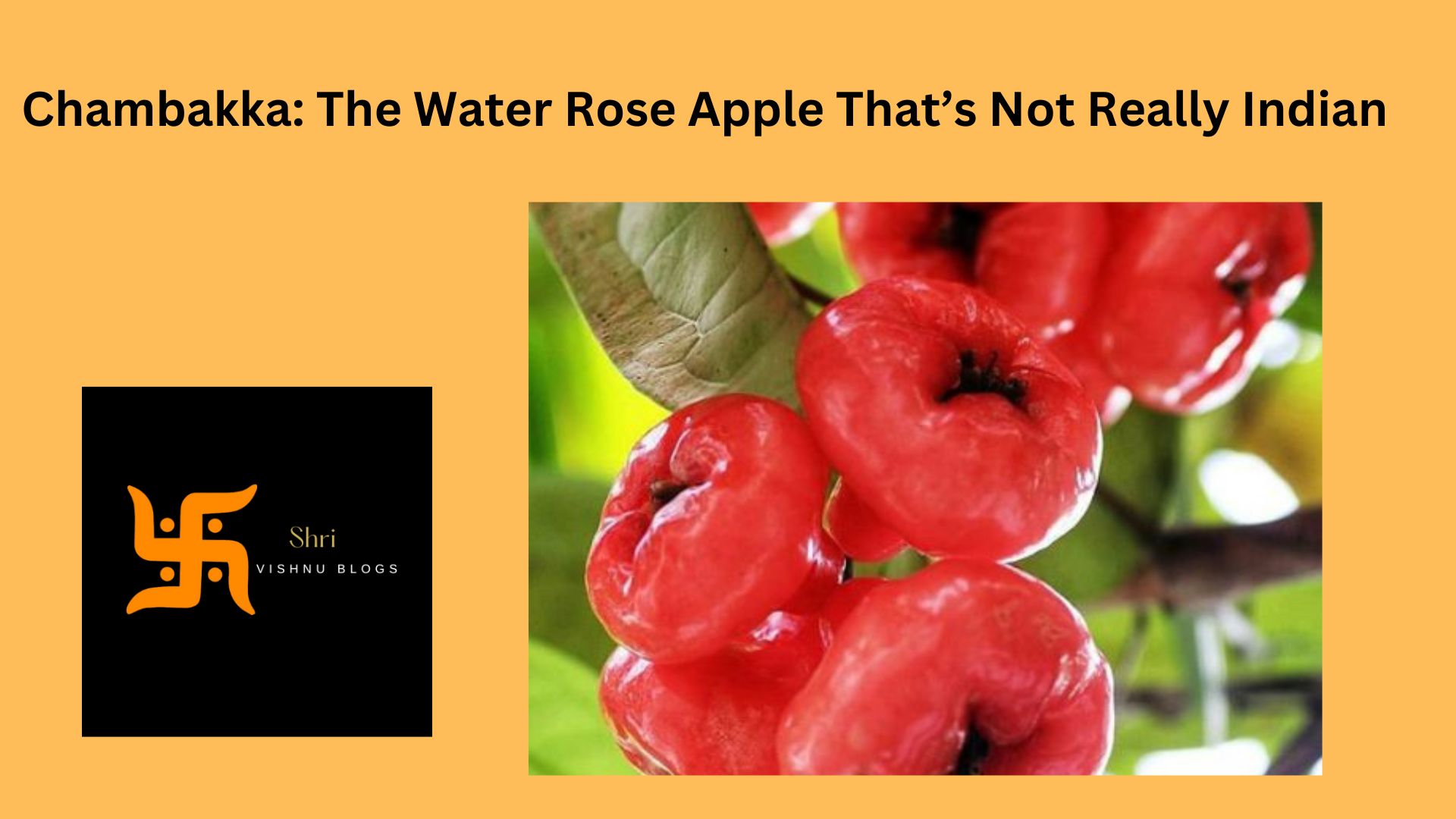
The water rose apple, fondly called chambakka in many Indian households, is more than just a fruit—it’s a nostalgic reminder of carefree childhood summers. With its vivid colors, crisp texture, and sweet-tart flavor, chambakka feels like an integral part of Indian culture. But here’s a little-known fact: this beloved fruit isn’t originally from India.
A Foreign Origin
Despite being cherished across the country, chambakka, or Syzygium samarangense, hails from the Malaysian Archipelago and the Andaman and Nicobar Islands. Over time, it made its way to Indian soil, thriving in the tropical climate and becoming a familiar presence in home gardens and local markets.
The Journey of Chambakka
The cultivation of Syzygium samarangense dates back to 17th-century Taiwan, where improved farming practices helped spread its popularity. From there, it expanded across Southeast Asia and beyond. Today, it’s grown in countries such as Indonesia, Malaysia, Thailand, and India, where it thrives in humid states like Andhra Pradesh, Assam, Goa, Kerala, and West Bengal.
Known by various names across India—nerale in Kannada, neredu in Telugu, jambhul in Marathi, and pani seb in Hindi—it’s also called Java apple, chomphu (in Thai), and Otaheti apple (in Jamaica).
Packed with Nutrition
More than just a refreshing snack, the water rose apple is a nutritional powerhouse. Its juicy, waxy flesh—ranging in color from white and green to deep red—is loaded with water, making it an excellent choice for staying hydrated.
The fruit is rich in essential minerals like calcium, potassium, magnesium, and zinc, as well as vitamins such as C, thiamin, and riboflavin. Additionally, it contains phytochemicals like arjunolic acid and jamboline, which are believed to have antioxidant, anti-cancer, antidiabetic, and antimicrobial properties.
Though not a staple in traditional medicine, the water rose apple is thought to help with digestive issues, inflammation, and respiratory problems. Its carminative properties make it effective against flatulence, while its hydrating qualities combat fatigue.
Beyond Fresh Fruit
While the water rose apple is delicious when eaten fresh, its versatility extends far beyond that. It’s often used to create jams, jellies, juices, wines, candies, and even vinegar. These value-added products not only extend the fruit’s shelf life but also make it more commercially viable.
A Part of India’s Heart, if Not Its Soil
Though not native to India, chambakka has firmly established itself as a cherished part of the country’s culinary and cultural landscape. Its vibrant flavors and health benefits ensure its place in Indian homes for generations to come, proving that sometimes the most treasured traditions can have roots far from home.



More Stories
Golden Years, Golden Choices: A Complete Guide to Choosing the Perfect Senior Living Community
Top 10 Bedding Essentials: Elevate Your Comfort and Style
Flossing Daily May Lower Heart Disease, Stroke, and AFib Risk